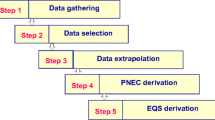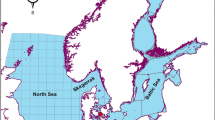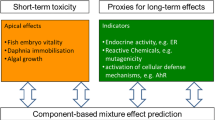Abstract
The Australian and New Zealand Guidelines for Fresh and Marine Water Quality are a key document in the Australian National Water Quality Management Strategy. These guidelines released in 2000 are currently being reviewed and updated. The revision is being co-ordinated by the Australian Department of Sustainability, Environment, Water, Population and Communities, while technical matters are dealt with by a series of Working Groups. The revision will be evolutionary in nature reflecting the latest scientific developments and a range of stakeholder desires. Key changes will be: increasing the types and sources of data that can be used; working collaboratively with industry to permit the use of commercial-in-confidence data; increasing the minimum data requirements; including a measure of the uncertainty of the trigger value; improving the software used to calculate trigger values; increasing the rigour of site-specific trigger values; improving the method for assessing the reliability of the trigger values; and providing guidance of measures of toxicity and toxicological endpoints that may, in the near future, be appropriate for trigger value derivation. These changes will markedly improve the number and quality of the trigger values that can be derived and will increase end-users’ ability to understand and implement the guidelines in a scientifically rigorous manner.
Similar content being viewed by others
References
ANZECC (Australian and New Zealand Environment and Conservation Council) (1992) National Water Quality Management Strategy. ANZECC, Canberra, Australia. http://www.environment.gov.au/water/policy-programs/nwqms/. Accessed 10 Jan 2013
ANZECC/ARMCANZ (Australian and New Zealand Environment and Conservation Council and Agriculture and Resource Management Council of Australia and New Zealand) (2000a) National Water Quality Management Strategy, Document 4—Australian and New Zealand Guidelines for Fresh and Marine Water Quality. ANZECC/ARMCANZ, Canberra, Australia. http://www.environment.gov.au/water/publications/quality/nwqms-guidelines-4-vol1.html, http://www.environment.gov.au/water/publications/quality/nwqms-guidelines-4-vol2.html, and http://www.environment.gov.au/water/publications/quality/nwqms-guidelines-4-vol3.html. Accessed 10 Jan 2013
ANZECC/ARMCANZ (Australian and New Zealand Environment and Conservation Council and Agriculture and Resource Management Council of Australia and New Zealand) (2000b) National Water Quality Management Strategy, Document 7—Australian Guidelines for Water Quality Monitoring and Reporting. ANZECC/ARMCANZ, Canberra, Australia. http://www.environment.gov.au/water/publications/quality/nwqms-monitoring-reporting.html. Accessed 10 Jan 2013
Campbell E, Palmer MJ, Shao Q, Wilson D (2000) BurrliOZ: a computer program for calculating toxicant trigger values for the ANZECC and ARMCANZ water quality guidelines. Perth, Western Australia, Australia. http://www.cmis.csiro.au/envir/burrlioz/Download1.htm. Accessed 10 Jan 2013
CCME (Canadian Council of Ministers of the Environment) (2007) A protocol for the derivation of water quality guidelines for the protection of aquatic life 2007. In: Canadian Environmental Quality Guidelines, Canadian Council of Ministers of the Environment, 1999, Winnipeg, MB, Canada. 37pp
Chapman PM, Cardwell RS, Chapman PF (1996) A warning: NOECs are inappropriate for regulatory use. Environ Toxicol Chem 15:77–79
Chapman PM, McDonald B, Kickham PE, McKinnon S (2006) Global geographic differences in marine metals toxicity. Mar Pollut Bull 52:1081–1084
Crane M, Kwok KWH, Wells C, Whitehouse P, Lui GCS (2007) Use of field data to support European Water Framework Directive Quality Standards for dissolved metals. Environ Sci Technol 41:5014–5021
Daam MA, Van den Brink PJ (2010) Implications of differences between temperate and tropical freshwater ecosystems for the ecological risk assessment of pesticides. Ecotoxicology 19:24–37
Davies PE, Cook LSJ, Goenarso D (1994) Sublethal responses to pesticides of several species of Australian freshwater fish and crustaceans and rainbow trout. Environ Toxicol Chem 13:1341–1354
De Schamphelaere KAC, Janssen CR (2004) Development and field validation of a biotic ligand model predicting chronic copper toxicity to Daphnia magna. Environ Toxicol Chem 23:1365–1375
De Schamphelaere K, Heijerick D, Janssen C (2002) Refinement and field validation of a biotic ligand model predicting acute copper toxicity to Daphnia magna. Comp Biochem Physiol C 133:243–258
Dyer SD, Belanger SE, Carr GJ (1997) An initial evaluation of the use of Euro/North American fish species for tropical effects assessments. Chemosphere 35:2767–2781
EC (European Commission) (2011) Common implementation strategy for the Water Framework Directive (2006/60/EC). Guidance document no. 27. Technical guidance for deriving environmental quality standards. European Commission, Brussels, Belgium, 204pp
ECHA (European Chemical Agency) (2007) Guidance for identification and naming of substances under REACH. European Chemicals Agency, Helsinki, Finland. http://guidance.echa.europa.eu/. Accessed 12 Jan 2013
ECHA (European Chemical Agency) (2008) The guidance on information requirements and chemical safety assessment. Guidance for the implementation of REACH. European Chemical Agency, Helsinki, May 2008
Fox DR (2009) Opinion: NECs, NOECs and the ECx. Australas J Ecotoxicol 14:7–10
Fox DR (2010) An integrated Bayesian approach for determining the no effect and hazardous concentrations in ecotoxicology. Environ Toxicol Chem 73:123–131
Geotechnical Services (2006) Effects of RO brine on the development of giant cuttlefish (Sepia apama) embryos. Report ENV06-128. Report prepared for BHP-Billiton. 73pp
Hall JA, Golding LA (1998) Standard methods for whole effluent toxicity testing: development and application. Report no. MFE80205. NIWA report for the Ministry for the Environment, Wellington, New Zealand. pp. 53. http://www.mfe.govt.nz/publications/water/whole-effluent-toxicity-nov98/index.html
Heijerick DG, De Schamphelaere KAC, Janssen CR (2002a) Biotic ligand model development predicting Zn toxicity to the alga Pseudokirchneriella subcapitata: possibilities and limitations. Comp Biochem Physiol C 133:207–218
Heijerick DG, De Schamphelaere KAC, Janssen CR (2002b) Predicting acute zinc toxicity for Daphnia magna as a function of key water chemistry characteristics: development and validation of a biotic ligand model. Environ Toxicol Chem 21:1309–1315
Hickey CW (2000) Ecotoxicology: laboratory and field approaches. In: Collier KC, Winterbourn M (eds) New Zealand stream invertebrates: ecology and implications for management. New Zealand Limnological Society, Christchurch, New Zealand, pp 313–343
Hickey CW, Martin ML (1995) Relative sensitivity of five benthic invertebrate species to reference toxicants and resin acid contaminated sediments. Environ Toxicol Chem 14:1401–1409
Hoang TC, Tomasso JR, Klaine SJ (2004) Influence of water quality and age on nickel toxicity to fathead minnows (Pimephales promelas). Environ Toxicol Chem 23:86–92
Hobbs DA, Warne MStJ, Markich SJ (2004) Utility of northern hemisphere metal toxicity data in Australasia. SETAC Globe 5:38–39
Hoekstra JA, Van Ewijk PH (1993) Alternatives for the no-observed effect level. Environ Toxicol Chem 12:187–194
Hose GC, Van den Brink PJ (2004) Confirming the species sensitivity distribution concept for endosulfan using laboratory, mesocosm and field data. Arch Environ Contam Toxicol 47:511–520
Jager T (2012) Bad habits die hard: the NOEC’s persistence reflects poorly on ecotoxicology. Environ Toxicol Chem 31:228–229
Johnston N, Skidmore J, Thompson GB (1990) Applicability of OECD data to Australian aquatic species. A report to the Advisory Committee on Chemicals in the Environment. Australian and New Zealand Environment and Conservation Council, Canberra, Australia
JSC (Joint Steering Committee for the Revision of the National Water Quality Management Strategy) (2010) Frequently asked questions. http://www.scew.gov.au/archive/water/pubs/wq_fmwq_revision_of_guidelines_faq_final_230910.pdf. Accessed 10 Jan 2013
Keithly J, Brooker JA, DeForest DK, Wu BK, Brix KV (2004) Acute and chronic toxicity of nickel to a cladoceran (Ceriodaphnia dubia) and an amphipod (Hyalella azteca). Environ Toxicol Chem 23:691–696
Kwok KWH, Leung KMY, Chu VKH, Lam PKS, Morritt D, Maltby L, Brock TCM, Van den Brink PJ, Warne MStJ, Crane M (2007) Comparison of tropical and temperate freshwater species sensitivities to chemicals: implications for deriving safe extrapolation factors. Integr Environ Assess Manag 3:49–67
Kwok KWH, Bjorgesaeter A, Leung KMY, Lui GCS, Gray JS, Shin PKS, Lam PKS (2009) Deriving site-specific sediment quality guidelines for Hong Kong marine environments using field-based species sensitivity distributions. Environ Toxicol Chem 27:226–234
Landis WG, Chapman PM (2011) Well past time to stop using NOELs and LOELs. Integrated Environmental Assessment and Management 7, vi–viii
Maltby L, Blake N, Brock TCM, Van den Brink PJ (2003) Addressing interspecific variation in sensitivity and the potential to reduce this source of uncertainty in ecotoxicological assessments. Science and Research Report PN0932. Department for Environment, Food and Rural Affairs, London, UK. www.defra.gov.uk/science. Accessed 15 Jan 2013
Markich SJ, Camilleri C (1997) Investigation of metal toxicity to tropical biota: Recommendations for revision of the Australian water quality guidelines. Supervising Scientist Report SSR 127, Supervising Scientist, Canberra, Australia
Merrington, Youn-Joo An, Grist EPM, Jeong S-W, Rattikansukha C, Roe S, Schneider U, Sthiannopkao S, Suter GW II, Van Dam R, Van Sprang P, Wang J-Y, Warne MStJ, Yillia PT, Zhang X-W, Leung KMY (2013) Water quality guidelines for chemicals: learning lessons to deliver meaningful environmental metrics. Env Sci Poll Res. doi:10.1007/s11356-013-1732-8
Mulhall A (1997) Models to predict the toxicity of selected phenols and benzamines to a cladoceran and a marine bacterium. Honours thesis, University of Technology Sydney, Australia, 112 pp
NEPC (National Environment Protection Council) (2011a) National Environment Protection (Assessment of Site Contamination) Measure. Schedule B5b—Guideline on methodology to derive Ecological Investigation Levels in contaminated soils. NEPC, Adelaide, Australia. 87 pp. http://www.ephc.gov.au/sites/default/files/Schedule_B5b__Guideline_on_methodology_to_derive_EILs__SEP10.pdf. Accessed 12 Jan 2013
NEPC (National Environment Protection Council) (2011b) National Environment Protection (Assessment of Site Contamination) Measure. Schedule B5c—Guideline on soil quality guidelines for arsenic, chromium III, copper, DDT, lead, naphthalene, nickel and zinc. NEPC, Adelaide, Australia. 177pp. http://www.ephc.gov.au/sites/default/files/Schedule_B5c__Guideline_on_soil_quality_guidelines__SEP10.pdf. Accessed 12 Jan 2013
Newman MC (2008) What exactly are you inferring? A closer look at hypothesis testing. Environ Toxicol Chem 27:1013–1019
Newman MC, Ownby DR, Mezin LCA, Powell DC, Christensen T, Lerberg SB, Anderson BA (2000) Applying species-sensitivity distribution in ecological risk assessment: assumptions of distribution type and sufficient numbers of species. Environ Toxicol Chem 19:508–515
Noppert F, Van der Hoeven N, Leopold A (1994) How to measure no effect? Towards a new measure of chronic toxicity in ecotoxicology. Netherlands Working Group on Statistics and Ecotoxicology, Delft, The Netherlands
OECD (2006) Current approaches in the statistical analysis of ecotoxicity data: a guide to application. OECD Environmental Health and Safety Publication, Series on Testing and Assessment, No. 54, Environment Directorate, ENV/JM/MONO(2006)18, Paris, France
Paquin PR, Di Toro DM, Santore RC, Trivedi D, Wu KB (1999) A biotic ligand model of the acute toxicity of metals: III. Application to fish and Daphnia magna exposure to silver. US Government Printing Office, Washington DC, 1999. EPA 822-E-99-001
Phyu YL (2004) Assessment of toxicity, bioavailability, partitioning and hazard of the herbicides, atrazine and molinate. PhD thesis. University of Technology Sydney, Australia, 281pp
Rombke J, Waichman AV, Garcia MVB (2008) Risk assessment of pesticides for soils of the central Amazon, Brazil: comparing outcomes with temperate and tropical data. Integr Environ Assess Manag 4:94–104
Rose RM, Warne MStJ, Lim RP (1998) Quantitative structure–activity relationships and volume fraction analysis for nonpolar narcotic chemicals to the Australian cladoceran Ceriodaphnia cf. dubia. Arch Environ Contam Toxicol 34:248–252
Sanchez-Bayo F, Hyne RV (2011) Comparison of environmental risks of pesticides between tropical and non-tropical regions. Integr Environ Assess Manag 7:577–586
Santore RC, Di Toro DM, Paquin PR, Allen HE, Meyer JS (2001) A biotic ligand model of the acute toxicity of metals. II. Application to acute copper toxicity in freshwater fish and daphnia. Environ Toxicol Chem 20:2397–2402
Shao Q (2000) Estimation for hazardous concentrations based on NOEC toxicity data: an alternative approach. Environmetrics 11:583–595
Shao Q, Warne MStJ (2002) Critical assessment of current water quality guidelines and potential further development. In ‘Interact 2002—Program and Abstract Book. Sydney, 21–25 July, 2002’, p. 158
Simpson SL, Batley GE, Chariton AA (2010) Revision of the ANZECC/ARMCANZ Sediment Quality Guidelines. CSIRO Land and Water Science Report 08/07. August 2008, revised July 2010. Report prepared for the Department of Environment, Water, Heritage and the Arts. 115pp
Sinclair A, Tayler K, van Dam R, Hogan A (2013) Site-specific water quality guidelines: 2. Development of a water quality regulation framework for pulse exposures of mine water discharges at a uranium mine in northern Australia. Environ Sci Pollut Res. doi:10.1007/s11356-013-1922-4
Sunderam RIM, Cheng DMH, Thompson GB (1992) Toxicity of endosulfan to native and introduced fish in Australia. Environ Toxicol Chem 11:1469–1476
USEPA (2007a) Water Quality Standards Handbook. 2nd Ed. EPA-823-B-94-0059. 2007 Update. United States Environmental Protection Agency, Washington DC, USA
USEPA (2007b) Aquatic life ambient freshwater quality criteria— copper. 2007 Revision. No. EPA-822-R-07-001. United States Environmental Protection Agency, Criteria and Standards Division, Washington D.C
USEPA (U.S. Environmental Protection Agency) (1999) Water quality guidance for the Great Lakes system, Federal Register, 40 CFR Part 142, July 1. USEPA, Washington, DC, USA
Van Dam RA, Chapman JC (2001) Direct toxicity assessment (DTA) for water quality guidelines in Australia and New Zealand. Australas J Ecotoxicol 7:175–198
Van Dam RA, Harford AJ, Houston MA, Hogan AC, Negri A (2008) Tropical marine toxicity testing in Australia: a review and recommendations. Australas J Ecotoxicol 14:55–88
Van Dam R, Harford A, Warne MStJ (2012a) Time to get off the fence: the need for definitive international guidance for statistical analysis of ecotoxicity data. Integr Environ Assess Manag 8:242–245
Van Dam RA, Trenfield MA, Markich SJ, Harford AJ, Humphrey AC, Stauber JL (2012b) Re-analysis of uranium toxicity data for freshwater organisms and the influence of dissolved organic carbon. Environ Toxicol Chem 31:2606–2614
Van Dam RA, Humphrey CL, Harford AJ, Frostick A, Jones DR, Davies S, Storey AW (2013) Site-specific water quality guidelines: 1. Derivation approaches based on physicochemical, ecotoxicological and ecological data. Environ Sci Pollut Res. doi:10.1007/s11356-013-1780-0
Van der Hoeven N (1997) How to measure no effect. Part 1: towards a new measure of chronic toxicity? Environmetrics 8:241–248
Warne MStJ (1998) Critical review of methods to derive water quality guidelines for toxicants and a proposal for a new framework. Supervising Scientist Report 135, Supervising Scientist, Canberra, ACT, Australia. ISBN 0 642 24338 7. 82pp
Warne MStJ (2001) Derivation of the ANZECC and ARMCANZ water quality guidelines for toxicants. Australas J Ecotoxicol 7:123–136
Warne MStJ (2010) A refined assessment of the selection of species and other factors that affect dilution factors for the proposed desalination plant at Point Lowly, South Australia. CSIRO Land and Water Science Report 07/10. CSIRO, Adelaide, South Australia, 43pp. http://www.bhpbilliton.com/home/aboutus/regulatory/Documents/Olympic%20Dam%20Supplementary%20EIS/Appendices/Appendix%20H4_Ecotoxicology.pdf. Accessed 11 May 2013
Warne MStJ, Van Dam R (2008) NOEC and LOEC data should no longer be generated or used. Australas J Ecotoxicol 14:1–5
Westbury A-M, Warne MStJ, Lim RP (2004) Toxicity of substituted phenols to Ceriodaphnia cf. dubia and Vibrio fischeri and the development of predictive models. Australas J Ecotoxicol 10:33–42
Wheeler JR, Grist EPM, Leung KMY, Morritt D, Crane M (2002) Species sensitivity distributions: data and model choice. Mar Pollut Bull 45:192–202
Author information
Authors and Affiliations
Corresponding author
Additional information
Responsible editor: Philippe Garrigues
Rights and permissions
About this article
Cite this article
Warne, M.S.J., Batley, G.E., Braga, O. et al. Revisions to the derivation of the Australian and New Zealand guidelines for toxicants in fresh and marine waters. Environ Sci Pollut Res 21, 51–60 (2014). https://doi.org/10.1007/s11356-013-1779-6
Received:
Accepted:
Published:
Issue Date:
DOI: https://doi.org/10.1007/s11356-013-1779-6




